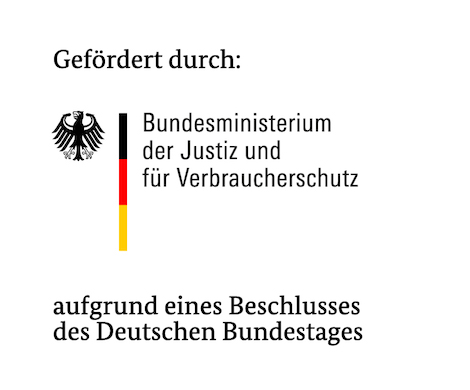Almost every product consumers buy comes with information for use. This information is crucial for the safe, effective, and efficient use of the product. Information for use covers information needed during the lifetime of the product such as, for example, re-packaging, transport and storage, installation, commissioning, operation, maintenance and repair, replacement of parts, disassembly, recycling and disposal. The term “information for use” covers a broad range of information products such as “instructions” (for assembly or operation), “instruction handbooks”, “manuals”, “service schedules”, and “information on repairs”.
Consumers access information for use mainly to install and operate the product, for troubleshooting, and to look up technical details (e.g., consumables and spare parts). However, all aspects for the safe, effective, and efficient use of the product are important and need to be covered in the information for use.
Because the information for use is part of the product, the quality of the information for use is part of the product quality. The quality of information for use can vary significantly from product to product. Product tests conducted by members of International Consumer & Research Testing (ICRT) have revealed that it covers the complete range from very good to poor. [1]
A comprehensive list of problems consumers encountered was identified and analyzed in a study commissioned by the DIN Consumer Council in 2009. [2] From these problems, criteria for high-quality information for use were derived (see Table 1).

Table 1: Aspects relevant for high-quality information for use from a consumer’s perspective
What is IEC/IEEE 82079-1?
Preparing information for use is not a trivial task, and needs careful and comprehensive consideration and attention. To achieve a high-quality information for use three international standards bodies combined their knowledge to develop a very useful standard: IEC/IEEE 82079-1 ‘Preparation of information for use (instructions for use) of products – Part 1: Principles and general requirements’ provides a technical description of aspects to consider and follow when creating information for use. IEC, IEEE, and ISO joined forces to develop and publish IEC/IEEE 82079-1:2019. The standard covers the information for use of all products within the scope of these organizations whether it be electrical, non-electrical or software.
IEC/IEEE 82079-1 states that information for use is necessary for the safe use of a product; helpful for its efficient and effective use, and often necessary to fulfil market, legal, and regulatory obligations. As the range of covered products is extensive here is a brief overview of the included products. IEC/IEEE 82079-1 covers consumer products such as household appliances, cosmetics, furniture, toys, audio-visual devices, and do-it-yourself products; machinery such as Electric Power-Assisted Cycle (EPAC), lawnmowers, power tools (drills, saws, grinders); means of transport (cars) as well as medical devices (hearing aids, heart pacemakers) and application software (business and web applications).
Information for use applies to many different phases of a product’s life cycle such as transport, assembly, installation, commissioning, operation, monitoring, troubleshooting, maintenance, repair, decommissioning, and disposal, and the respective tasks performed by skilled and unskilled persons. In this context consumers are considered ‘unskilled persons’. Among others, this standard is intended for acquirers and suppliers of products as well as for authorities. This underlines the need for the application of IEC/IEEE 82079-1 by various parties involved in the presentation of information for use of products intended for use by consumers.
IEC/IEEE 82079-1 establishes principles for the selection of content, structure, and format for information for use as well as for the design and maintenance processes. These principles are concerned with the quality of the content, the purpose of the information for use, and the management of information. They form the backbone of the subsequent guidelines regarding the information management process, the content of the information for use, its structure, media and format, and professional competencies.
The standard starts with a general description that the necessary information for the safe, efficient, and effective use of the product needs to be provided to the target audience, before describing five principles that pertain to the information for use. The first principle lists different information types. The other four principles cover “information for use as part of the product”, "target audiences’ orientation”, “safe use of the product” and “product’s compliance through information for use”. A general principle addresses information quality, stating that information for use shall meet the target audiences’ needs for information quality comprised of the following seven principles:
- Completeness
- Minimalism
- Correctness
- Conciseness
- Consistency
- Comprehensibility
- Accessibility
To illustrate the approach of the principles, two of them are described in more detail.
Target audiences’ orientation
The principle “target audiences’ orientation” refers to the group for whom the information for use is intended. This principle is intended to ensure that usable and relevant information is provided to the target audience concerning their tasks and goals. It includes reflecting their skills and the level of detail necessary to describe tasks using language and technical terms familiar to them, the availability of tools, and preconditions of the target audience’s working environment and particular needs.
Comprehensibility
The principle ‘comprehensibility’ requires plain text and terminology, clear illustrations, safety signs and graphical symbols, as well as distinct methods of navigation and use of media. To enhance comprehensibility, it is recommended to use features allowing for easy search, convenient navigation, and unambiguous meaning of content.
Some sections of IEC/IEEE 82079-1 describe the information management process comprising of the planning, designing, producing, and sustaining of information for use as well as professional competencies including requirements for persons involved in the creation of the information for use.
Other sections focus on the information products themselves, specifying content, structure, media and format of information for use. The claims section differentiates between requirements for the information for use of a specific product and those for process and professional competencies that were established by an organization for the creation of information for use. For consumer products, the product-related information requirements are essential and need to be fulfilled in the information of use of the supported product. Furthermore, the evaluation should include an empirical effectiveness check involving persons previously unfamiliar with the use of the supported product and the information for use. However, for technical communication companies, conforming with the standard’s process requirements could be an advantage, or prerequisite, when bidding for the production of comprehensive information for use of large industrial products.
An annex of IEC/IEEE 82079-1 describes methods for evaluating if the requirements of the standard are fulfilled.
What are the benefits for consumers?
From a consumer perspective IEC/IEEE 82079-1 will help to improve the quality of information for use, so that the information needed for the safe, efficient, and effective use of the product is presented appropriately. With a focus on target audience orientation, the consumer’s needs, preconditions, and requirements are addressed. Aspects relevant to the quality of information for use from a consumer’s perspective (as listed above) are all addressed in the standard. Considering specific use cases supports the approach to prepare information for use, fulfilling the needs of the target audience in their particular situation.
IEC/IEEE 82079-1 and ISO/IEC Guide 37
The ISO/IEC Guide 37 “Instructions for use of product by consumers” was initiated by the ISO/COPOLCO Committee on consumer policy, and first published in 1983. It was an established guide for technical committees preparing standards related to products that require information for use. [3] In addition, it was also intended for professionals engaged in the work of conceiving and drafting information for use (for example product designers and manufacturers). The revision of the standard has integrated all aspects of the ISO/IEC Guide 37 relating specifically to the preparation, content, and presentation of information for use of consumer products, into the broad scope of products covered by IEC/IEEE 82079-1 Ed.2. Moreover, the provisions in IEC/IEEE 82079-1 are often more binding since they are expressed as requirements and not just as recommendations.
Development of IEC/IEEE 82079-1 by IEC, ISO and IEEE committees
IEC/IEEE 82079-1 Edition 2 was published in 2019. Three international standards bodies were involved in the revision of the first edition of IEC 82079-1:2012, which was a dual logo standard of IEC and ISO. The standard can now be seen as a cross-organizational general consensus of principles and general requirements for the preparation of high-quality information for use for all kinds of products and all kinds of target audiences – from non-skilled consumers to expert professionals.
The revision of IEC 82079-1 Ed. 1 started in 2014. Besides members representing IEC and ISO committees, IEEE got involved as well. It is notable that three members of the JWG 16 represented consumer interests. In April 2020 the standard was adopted by CENELEC as EN/IEC/IEEE 82079-1 and must be implemented as a national standard by its members within six months.
Promoting IEC/IEEE 82079-1 in the standardization world
IEC/IEEE 82079-1 has the status of a horizontal standard in accordance with the IEC Guide 108 ‘Guidelines for ensuring the coherence of IEC publications - Horizontal functions, horizontal publications and their application’. Therefore IEC product committees addressing information for use in their standards are expected to make use of IEC/IEEE 82079-1 in the preparation of their publications.
The technical committee IEC/TC3 has made a request for IEC/IEEE 82079-1 to be included in the ISO/IEC directives Part 2 Annex D.2 Technical reference documents and sources for drafting.
Regulators/legislators count on information for use
Regulators are increasingly addressing information for use in legislation. One approach is to promote and ensure the safe use of the product by addressing legal requirements, e.g., for general products, but also for specific products such as toys, machinery, and medical devices. Examples are European directives such as
- General Product Safety Directive 2001/95/EC
- Toys Directive 2009/48/EC
- Machinery Directive 2006/42/EC
- Medical Device Directive 93/42/EEC
Another approach is to call for information to support the ecodesign of products in the context of resource efficiencies, including the extension of product life. This approach requires the provision of “information requirements” or “Information for Repair and Maintenance” in legislation for vacuum cleaners [4], household dishwashers [5] or household washing machines and dryers [6], servers and data storage products [7], as well as welding equipment [8].
Regulators/legislators can make use of IEC/IEEE 82079-1 to help prevent the sale of products with inadequate safety notes or warning messages, or lacking the necessary information to avoid premature scrapping of the product.
References
[1] For example the Ventilator test conducted by Stiftung Warentest, published in the magazine „test“ in June 2020.
[2] Verbraucherrat des DIN: Bedienungs- und Gebrauchsanleitungen: Probleme aus Verbrauchersicht und Lösungsansätze zur Verbesserung technischer Anleitungen, 2009. (The study was published in German with an English summary)
[3] IEC/IEEE 82079-1 introduced the term “information for use” as generic term. It is a synonym for “instructions for use”.
[4] EU 666/2013 for vacuum cleaners
[5] EU 2019/2022 for household dishwashers
[6] EU 2019/2023 for household washing machines and dryers
[7] EU 2019/424 for servers and data storage products
[8] EU 2019/1784 for welding equipment


